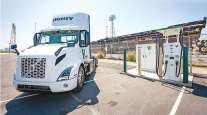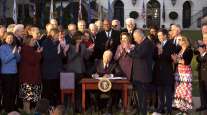Staff Reporter
Colorado May Vote on Potential Sales Tax Hike to Finance Road Projects

Colorado voters may see a question on the ballot in November about raising the state’s sales tax to finance infrastructure projects.
A bipartisan coalition of state leaders, industry experts and public sector representatives filed four ballot initiatives Feb. 22 that would poll voters about a sales tax increase to bolster transportation funding.
The four proposals recommend sales tax increases of various degrees. They propose a 0.5% sales tax increase, a 0.62% increase, a 1% increase or a 0.5% increase with a proviso requiring the state to devote $150 million from the general fund each year to transportation projects.
The coalition will decide which proposal ultimately goes on the ballot, a decision that will likely be shaped by the state Legislature’s deliberations about bonding in transportation funding.

Gibbs
The current Colorado sales tax is 2.9%. Summit County Commissioner Dan Gibbs, an early proponent of the initiatives, expressed optimism that one of the proposals will get approved and appear on the ballot.
“I think we will see one. I would like to see the one that has the best chance of passing,” Gibbs said. “There are billions of dollars of need in Colorado.”
Gibbs worked closely with Cathy Noon, former mayor of Centennial, to form the coalition, which has since garnered support from organizations such as the Denver Metro Chamber of Commerce and the Colorado Contractors Association.
Noon, who spent eight years serving in municipal government, said that local funding is just as important as state-level funding. Similar to Gibbs, Noon said that she could support any of the four proposals because infrastructure funding at the local level has become such a great need.
“I think, at this point, that things are so critical that personally I could probably support any of them,” Noon said.

Noon
Similar to many states, Colorado searches for funding mechanisms to address the need for infrastructure improvements. Increased fuel efficiency has thinned the stream of revenue that comes from gas taxes. Colorado’s gas tax has been 22 cents for more than 20 years.
The coalition found that the condition of Colorado’s transportation system costs residents $6.8 billion a year in traffic congestion delays, damage to vehicles, accidents and lost gas efficiency. Colorado Department of Transportation spokeswoman Amy Ford said that the state spent $127 per person on transportation infrastructure needs in 1991. Today, the state spends about $68 a person on such needs.
“It sort of shows in the quality of our roads. We’ve really struggled to keep up,” Ford said. “In general, we’ve long discussed the fact that we have serious funding gaps to address really the most critical transportation needs throughout the state.”
All four proposals would distribute funds among state and local government agencies. Some 45% would go to CDOT to address projects on major highways in the state. Specifically, Ford said projects would include an express lane on Interstate 70, the widening of I-25 between Colorado Springs and Denver and additional shoulders on rural highways.

Ford
Another 40% would go to local government projects, with funding split evenly between cities and counties. The final 15% would be set aside for multimodal projects, such as bus services and large-scale bike lanes. Gibbs explained that government agencies would be able to apply for grant money in this multimodal fund.
The tax called for in the proposals would last 20 years. The proposal itself would be managed by an oversight committee and charges CDOT with regularly issuing finance and progress reports to the public.
“Any additional resources and funding to the state of Colorado in regards to transportation would make a significant difference in the mobility and the safety of our traveling public,” Ford said. “We have done our best to articulate the needs that are here in the state. We owe to the public clearly articulated benefits and what they would see for their money.”




